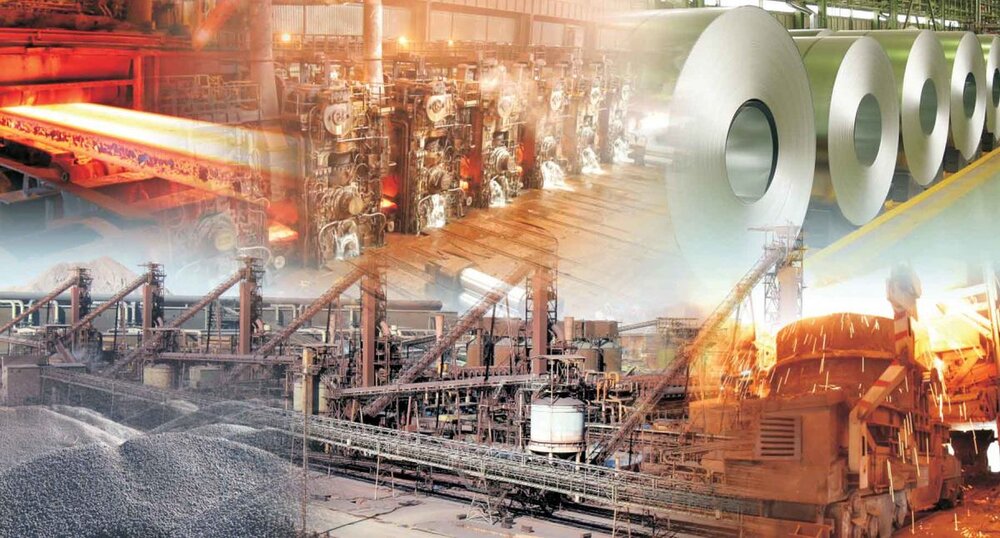Indigenizing modern technology in steel sector nullifies sanctions

While the U.S. unilateral sanctions on Iran in recent years have upset the Iranian industry in some sectors, the statistics indicate that the minerals sector has not been affected by the sanctions, while it’s been also improved.
The improvement is more noticeable in the steel sector, as according to the World Steel Association (WSA), Iran became the world’s tenth largest steel producer in 2018.
Iran which stood at the 13th place in 2017 could lag behind three major steel producers in the world, namely Italy, Taiwan, and Ukraine to stand at the 10th place in 2018, despite the re-imposition of sanctions by the U.S.
According to the WSA’s report, Iran produced 25 million tons of crude steel in 2018 which indicates 17.7 percent growth from 21.2 million tons in 2017.
Also as announced by the head of Iranian Mines and Mining Industries Development and Renovation Organization (IMIDRO), annual production of crude steel in Iran is planned to rise three million tons to 28 million tons in the current Iranian calendar year (ends on March 19, 2020).
Such progress in this sector is mainly the result of “indigenizing” approach, which is seriously followed up in all industrial sectors of the country.
In fact, indigenizing the technology of manufacturing required products, equipment and machinery to attain self-reliance is the major economic approach of the country during the sanctions.
Such approach is now seriously followed up in the oil industry as the major sector in Iran’s economy.
On Sunday, Sirous Talari, the chairman of the Board of Directors of Iranian Association of Manufacturers of Oil Industry Equipment, said nearly 85 percent of the country’s oil industry equipment are manufactured based on indigenized knowledge and technology.
And in terms of steel, Industry, Mining and Trade Minister Reza Rahmani has said that the country has achieved a proper self-reliance in this sector.
“This industry can be still developed and regarding the huge investment made in this sector during the past years, we will soon observe a good balance also in production chain of this metal in the country”, the minister said in a meeting with the members of Iran Steel Association in late June.
“Steel industry is one of the industries in which some good investment has been made and today it has become a production advantage”, Rahmani further underscored.
Indigenizing technology in steel sector today shields this sector from the sanctions, so it is atop agenda for the Ministry of Industry, Mining and Trade and its subsidiaries.
As IMIDRO head has said, “Today, we are witnessing a national will and determination for self-reliance and promotion of production and indigenizing should be in fact considered as a necessity in this regard”.
And the good news is that based on the released statistics this approach is bringing result, as World Steel Association’s latest report shows that production of crude steel in Iran during the first eight months of 2019 has risen six percent from that of the same period of time in 2018.
The WSA put the country’s crude steel output at 17.188 million tons in the eight-month period of this year, rising from 16.153 million tons in the same time span of the previous year.
Consequently, Iran’s production of crude steel is rising despite the U.S. attempts to [as the U.S. president said] “choke off the country’s largest non-petroleum related sources of export revenue" through imposing new sanctions on Iran's metals and minerals.
On Sunday, Hossein Modarres Khiabani, Iran’s deputy industry, mining and trade minister, announced indigenizing of the technology for manufacturing of modern equipment required in steel industry and said, “Sanctions could not impede development of Iranian industries, as our industries are improving relying on domestic capabilities.”
“Self-reliance and indigenizing in mining industries indicate high potential and capabilities of domestic sectors and their vigorous determination in this due”, the official underlined.
Leave a Comment